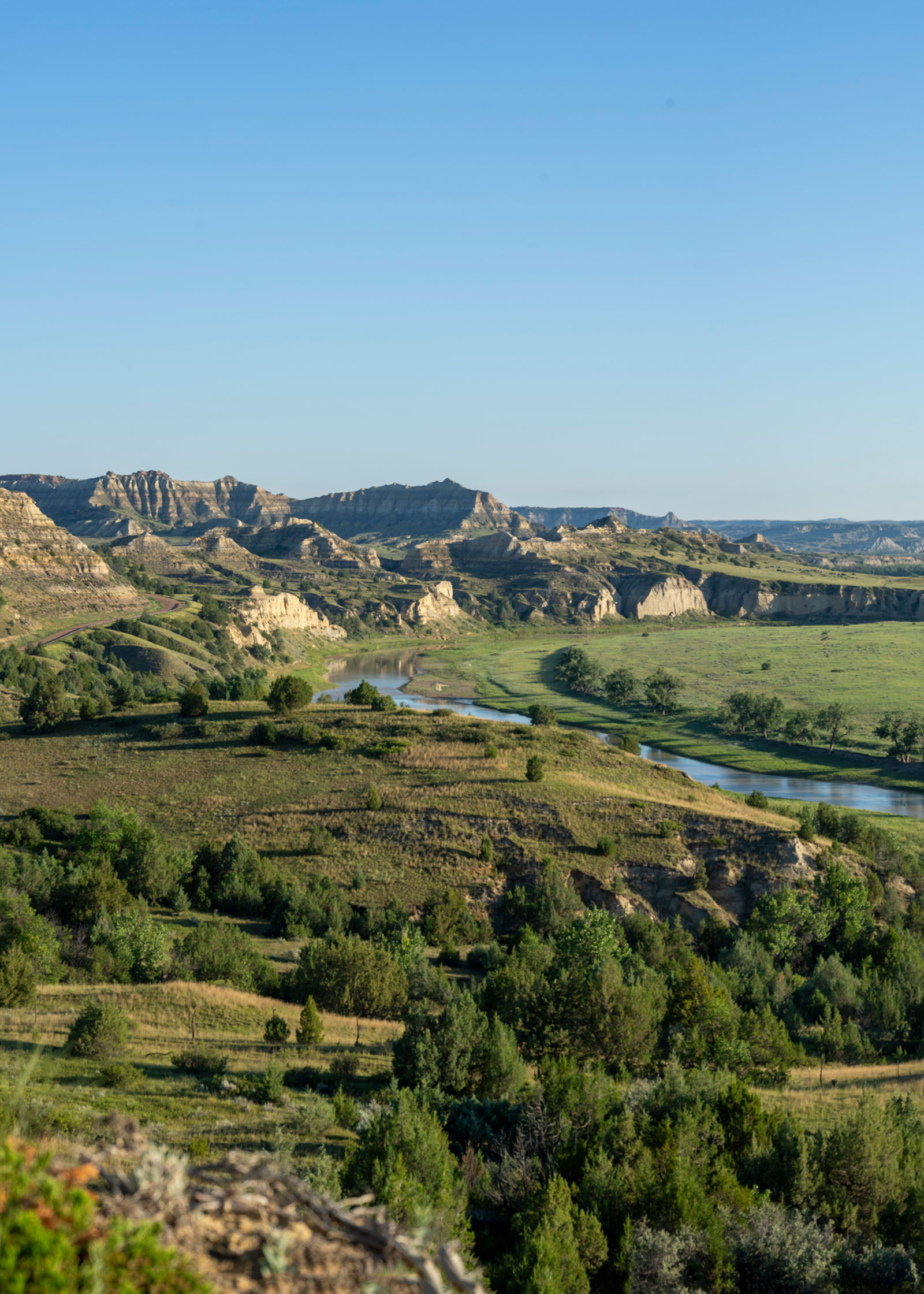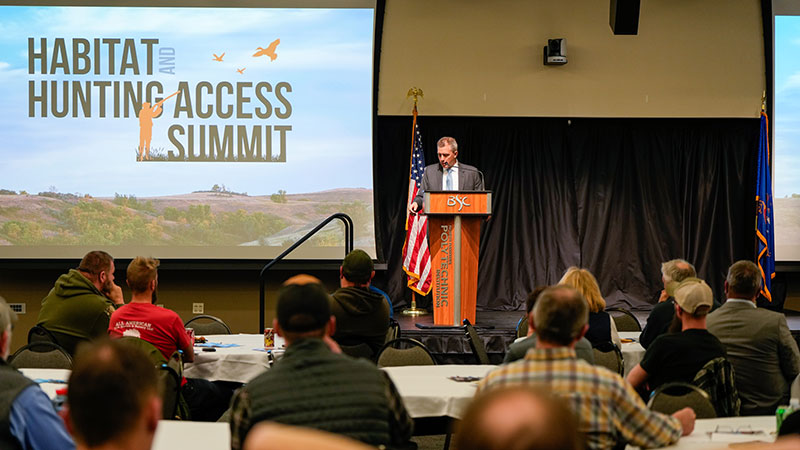The Fabric of North Dakota
Cayla Bendel

About this time last year, we were in the depths of planning the North Dakota Game and Fish Department’s first Habitat and Hunting Access Summit.
And while it seemed pretty trivial to spend time on meatball counts to feed attendees, AV equipment and table arrangements, as the Department’s R3 coordinator I know no mentorship program, online resource or marketing campaign can impact hunting participation as much as improving habitat and hunting access.
Sufficient meatballs in hand, the Department, along with Gov. Kelly Armstrong and around 200 hunters, landowners and others with a vested interest in the future of our hunting heritage, gathered for the Habitat and Hunting Access Summit in mid-December.
Of course, habitat conservation and providing hunting access are not novel concepts to the Department.
They’ve been the bread and butter of this agency since its inception, but the summit came in response to a building consensus that we’re approaching a pivotal moment for wildlife habitat conservation and hunter-landowner relationships.
The ship seems to be picking up speed in the wrong direction, and the Department can’t steer it alone.
And if we don’t stand at the helm together, our hunting heritage is on the line. And as Gov. Armstrong said that night, “It’s too big a part of the fabric of North Dakota to let that happen.”
Since the summit, the Department has been working to collect and summarize the feedback and initiate plans to address some of the key issues.
A full list of issues can be found online.
We have been and will continue to make progress on many of these recommendations but notably five large action items rose to the top.

Gov. Kelly Armstrong addresses those in attendance at the Habitat and Hunting Access Summit in December 2024.
1. Reach 1 million acres of PLOTS by 2028 with an emphasis on new grass plantings
This year hunters saw an additional 40,000 Private Land Open To Sportsmen acres on the landscape for a total of 880,000 acres. It’s been almost 15 years since we’ve had that many acres on the ground. Included in that acreage total was 5,000 acres of new grass planted.
2. Governor's Legacy Soil Health and Habitat Program
It’s well known that the hunting heyday of the early 2000s was in response to a flush of new grass on the landscape from the federal Conservation Reserve Program. But since then, North Dakota has dropped from 3 million acres, to just 1 million acres with more expected to expire in the coming years. The CRP program, as successful as it was, is determined through the federal Farm Bill and can be difficult to be accepted into and somewhat restrictive for landowners. The Department has partnered with the North Dakota Association of Soil Conservation District to apply for Outdoor Heritage Fund monies to pilot the Governor's Legacy Soil Health and Habitat Program; a state-level program to improve wildlife habitat on marginally productive cropland with broad support from agricultural groups. The goal is to eventually seek dedicated funding to implement the program on a larger scale.
3. Date customization within the electronic posting platform
Many of you are familiar with the years of debate that led up to the 2021 legislative session and the resulting electronic posting system we’ve now adopted. Each year there has been an increase in use of electronic posting as hunters and landowners alike have gotten comfortable with the process and compliance. This year eposting topped 14 million acres. In an increasingly digital world, many have suggested allowing customization within this system, such as dates, species, reservations, and so on. I’ll spare you the hundreds of hours of discussions about the data requirements, including terms unfamiliar to even me like “rest services,” the enforcement concerns on proving what was clearly communicated and so on. Needless to say, it’s complicated, and I can almost guarantee if you can think of it, it was discussed. Long story short, as a starting point, the most feasible option to begin to allow some customization, is to allow landowners to preselect the date windows they would like their land to be electronically posted versus an entire season. Hunters should note that if a property remains physically posted, this would not negate that, just as a currently electronically unposted piece could still be physically posted. This option will be available for the 2026 electronic posting season, which begins on Feb. 1 and ends July 1.
Notably, if just 5% of acres were opened via this option that would equate to 700,000 acres of additional hunting access for some portion of the season.

